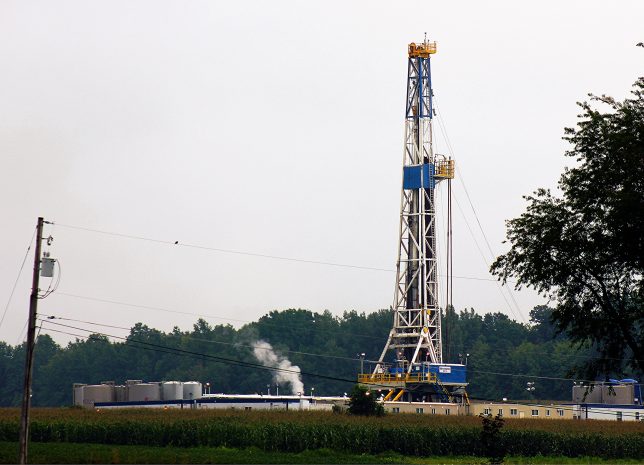
Pump-jack mining crude oil with the sunset. Photo by Zbynek Burival on Unsplash.
Fossil-Fuel Pollution and Its Dire Impact on Global Health
Let’s talk about how burning fossil fuels, like coal, oil, and gas, isn’t just bad for the planet—they are harmful to our health too, particularly through the production of petrochemicals that are foundational to many industrial and everyday products. When we talk about climate change, we’re also talking about something that directly touches our lives, through the air we breathe, the water we drink, and even the products we use every day. Drawing directly from the insights from the New England Journal of Medicine‘s review article, “Health Effects of Fossil Fuel–Derived Endocrine Disruptors” by Dr. Tracey J. Woodruff, it’s evident that the adverse health impacts of fossil-fuel pollution include harmful health implications, including cancer.
Global Impact of Pollution on Health
Did you know that pollution from chemicals is a top reason people are dying prematurely, especially in poorer countries? Most of these deaths come from places that can least afford to deal with these problems. Pollution disproportionately affects low- and middle-income countries, with over 90% of pollution-related deaths occurring in these regions. Experts think over 1.8 million people die each year because of this pollution, and that number might even be too low since we don’t know the full effects of all the chemicals due to the lack of comprehensive studies.
Growing Concern of Petrochemical-Related Illnesses
A big chunk of this problem comes from fossil fuels. When we dig them up and use them, they release a bunch of nasty chemicals. Many of these chemicals interfere with the endocrine system, acting as endocrine-disrupting chemicals (EDCs). Some of these chemicals mess with our hormones, leading to all sorts of health issues, from cancer to problems having babies. It’s a big deal because these chemicals are in so many things around us—from the plastic in toys and bottles to the makeup we might wear to pesticides on our fruits and vegetables.
Over the last seventy years or so, as we’ve used more fossil fuels and made more stuff from petrochemicals, we’ve seen more people getting sick with long-term illnesses. And it’s not just happening in one place but all over the world. This trend underscores the critical need for awareness and action to mitigate the health risks associated with petrochemical exposure.
Cancer and Petrochemical Exposure
Cancer is a big focus here. It’s heartbreaking how common it has become, and part of the blame lies with the chemicals that come from using fossil fuels. Substances like benzene, found in crude oil and gasoline, and formaldehyde, a byproduct of natural gas combustion, have been classified as carcinogens with strong links to leukemia and nasopharyngeal cancer, respectively. These and other chemicals, pervasive in our environment and daily lives, are not passive occupants. They sneak into our bodies and mess with the way our cells work, leading to diseases like cancer. You might not even know you’re being exposed to them until it’s too late.
Pervasive Problem of Plastics
Moreover, the production and widespread use of plastics, a hallmark of petrochemical derivatives, contribute to the dispersion of these harmful substances into the environment, food chains, and ultimately, our bodies. Phthalates and bisphenols, used to make plastics softer and more durable, have been under scrutiny for their estrogen-like effects, which can potentially lead to breast and other hormone-related cancers.
Taking Action Against Petrochemical Pollution
So, what can we do? For starters, we need to be mindful of our exposure to these chemicals. But that’s not enough. We need big changes, like laws and policies, to make our environment cleaner and safer for everyone. And we’ve got to think about the future and shift towards sustainable and renewable energy sources.
To wrap it up, the damage from fossil fuels to our health is huge, and it’s something we can’t ignore. It’s time for all of us to pay attention, push for change, and take steps toward a world where we’re not risking our health just by living in it. Together, we can fight for a healthier, cleaner future.

